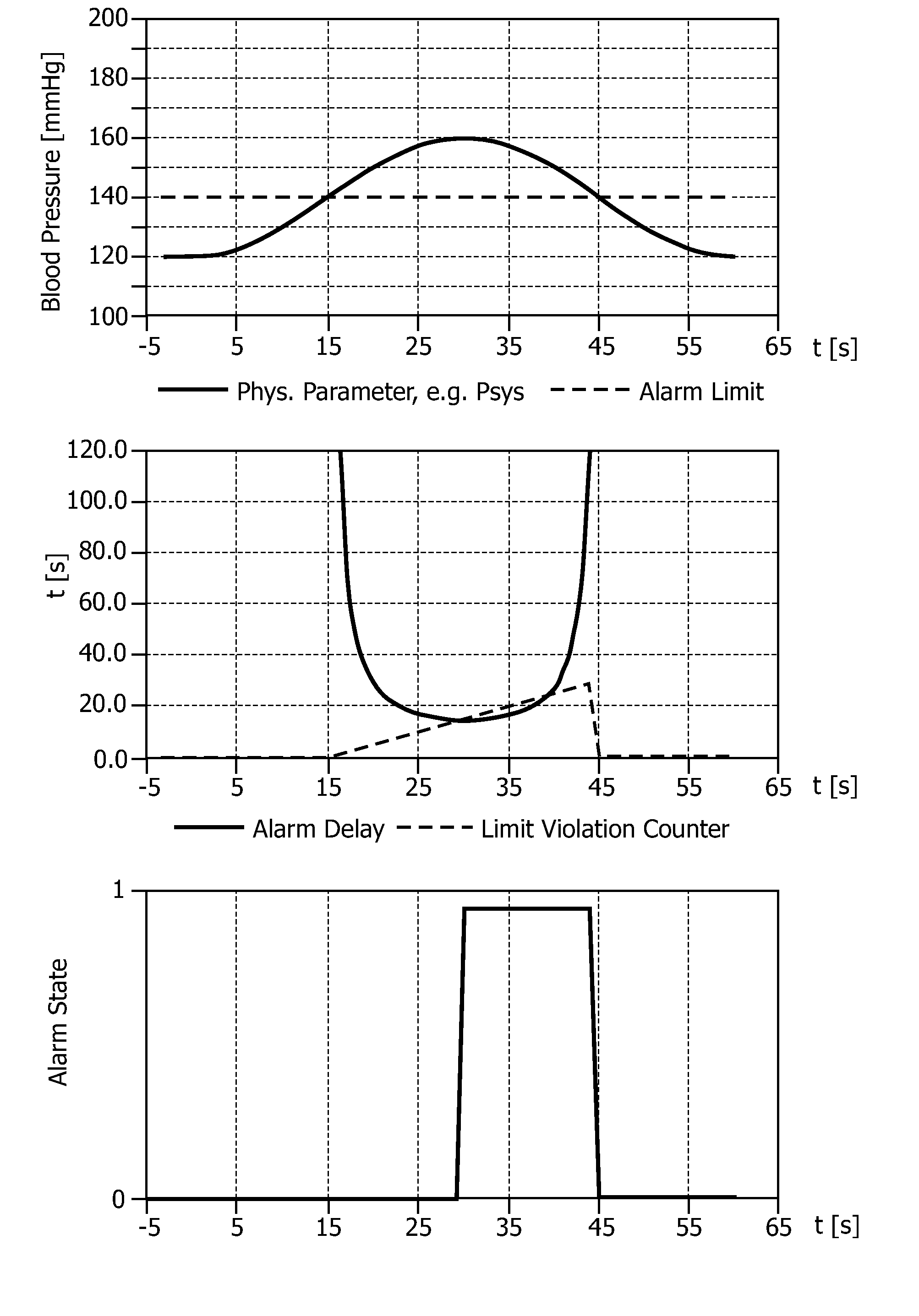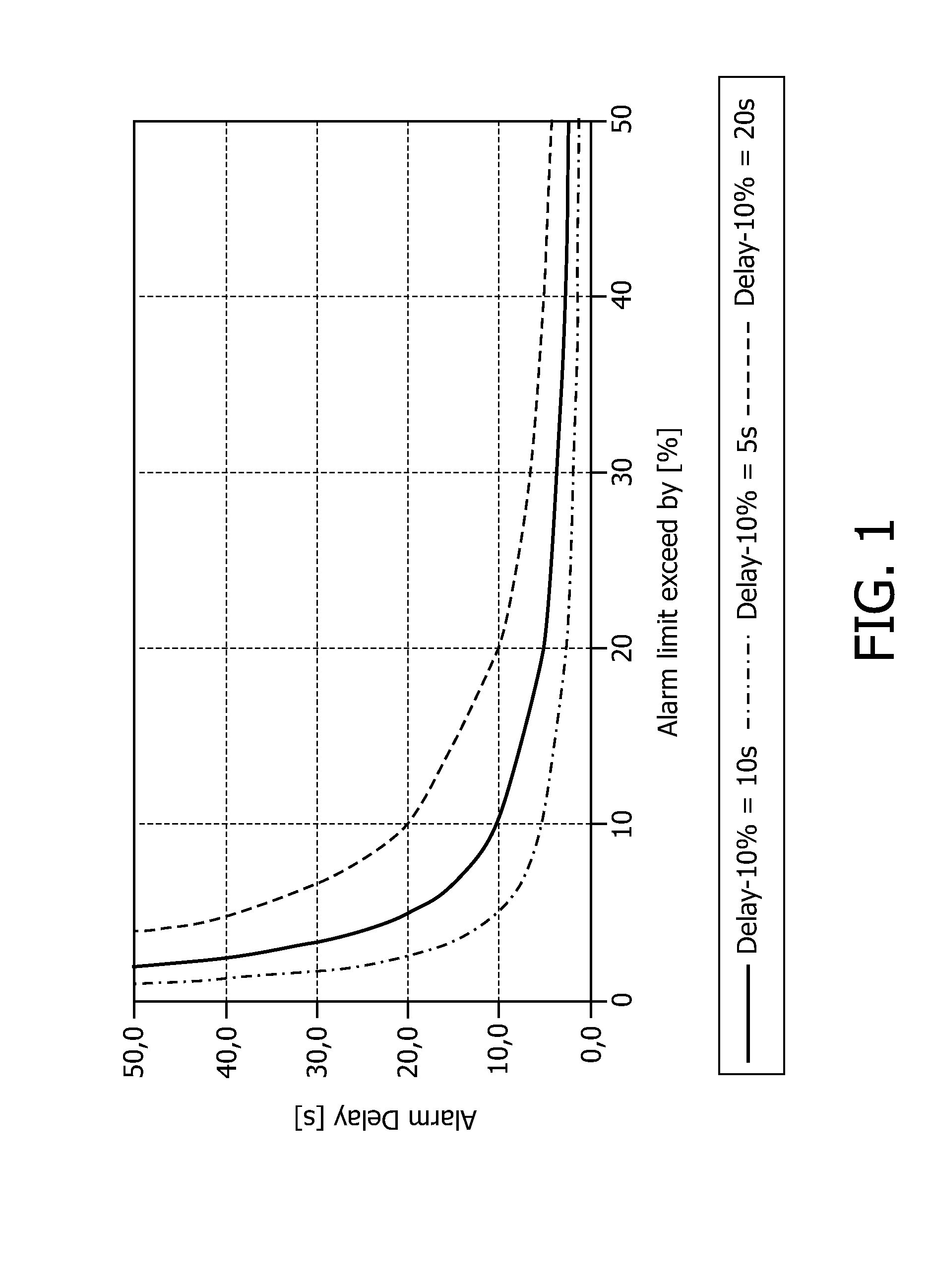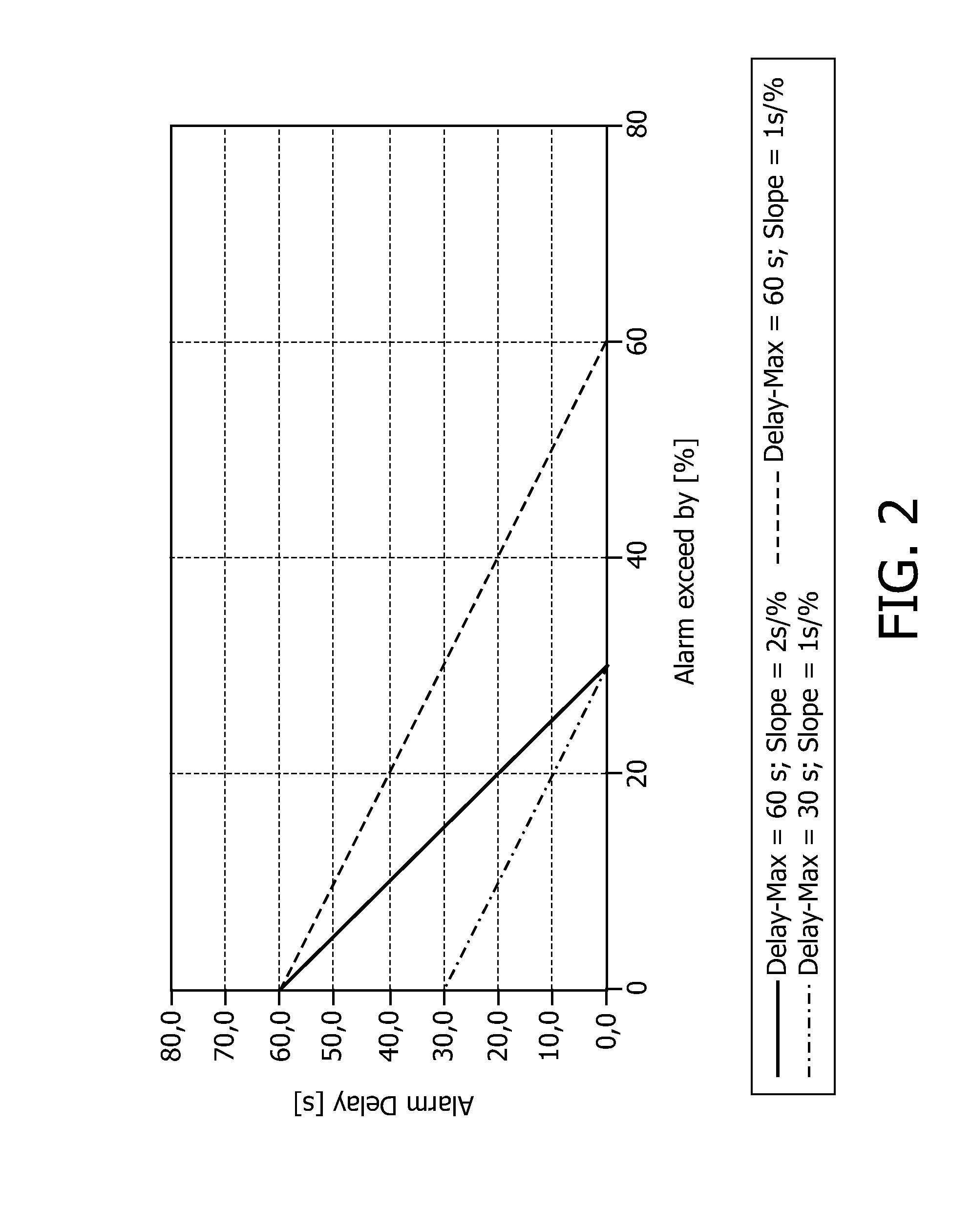Controlling an alarm in a medical instrument
a technology for controlling an alarm and a medical instrument, applied in the field of controlling an alarm in a medical instrument or a system, can solve the problems of alarms that cannot be sufficiently avoided, alarm delays, etc., and achieve the effect of reducing the delay of running alarms and shortening the delay
- Summary
- Abstract
- Description
- Claims
- Application Information
AI Technical Summary
Benefits of technology
Problems solved by technology
Method used
Image
Examples
first embodiment
[0034]According to the invention the alarm delay is calculated by the following formula:
A(nT)=abs(L / (V(nT)−L))*Dx %*X % / 100% (1),
[0035]wherein:[0036]A(nT)=alarm delay at nT[0037]T=update period[0038]L=normal value or upper or lower limit of a normal range[0039]V(nT)=value of the physiological parameter at nT[0040]Dx %=selected alarm delay at X % exceeding of the alarm limit (L).
[0041]Graphs of the according curves of the alarm delay versus the percentage by which the normal value or limit is exceeded are shown in FIG. 1. As can be seen from FIG. 1, small percentages cause high alarm delays according to formula (1). Accordingly, in order to avoid too long delays, the alarm delay calculated according to formula (1) can be limited by a minimum value and / or a maximum value. A minimum alarm delay is beneficial to prevent nuisance alarms resulting from brief changes of the physiological value which might be caused by artifacts. Further, a maximum alarm delay ensures that an alarm is gene...
second embodiment
[0042]According to the invention, the following formula can be used to calculate the alarm delay:
A(nT)=Dmax−S*abs(V(nT)−L) / L (2),
[0043]wherein:[0044]A(nT)=alarm delay at nT[0045]T=update period[0046]L=normal value or upper or lower limit of a normal range[0047]V(nT)=value of the physiological parameter at nT[0048]Dmax=maximum alarm delay[0049]S=slope with which the alarm delay decreases if the amount by which the physiological value exceeds the alarm limit increases.
[0050]This formula does not only consider the amount by which the physiological value exceeds the limit but also takes also into consideration the slope with which the alarm delay decreases if the amount by which the physiological value exceeds the alarm limit increases. The graph of according curves can be seen from FIG. 2. An offset may be added to formula (2) to get a minimum alarm delay.
[0051]From FIG. 3 an example for generating an alarm according to the first preferred embodiment of the invention can be seen. The ...
third embodiment
[0052]According to the invention, as shown below, a look-up table for the alarm delay is used instead of a formula:
[0053]
relative amount by whichresulting alarmthe limit is exceededdelay60 s10 to 20%20 s20 to 30%12 s30 to 40% 9 s40 to 50% 7 s>50% 5 s
[0054]Further, instead of making the alarm delay dependent on the absolute or relative amount by which the limit is exceeded or under-run, the alarm delay can be made dependent on the absolute value of the physiological parameter, the relative or absolute deviation of the physiological parameter from a normal value or the relative or absolute deviation from any predefined values.
[0055]For measuring the time since the physiological parameter has exceeded the upper limit or has under-run the lower limit, the limit violation timer is started as soon as the physiological value has crossed the according limit, respectively. At each time interval T the current alarm delay is calculated based on the current value of the physiological parameter ...
PUM
 Login to View More
Login to View More Abstract
Description
Claims
Application Information
 Login to View More
Login to View More - R&D
- Intellectual Property
- Life Sciences
- Materials
- Tech Scout
- Unparalleled Data Quality
- Higher Quality Content
- 60% Fewer Hallucinations
Browse by: Latest US Patents, China's latest patents, Technical Efficacy Thesaurus, Application Domain, Technology Topic, Popular Technical Reports.
© 2025 PatSnap. All rights reserved.Legal|Privacy policy|Modern Slavery Act Transparency Statement|Sitemap|About US| Contact US: help@patsnap.com



